- No products in the cart.
Hate Working with Spandex? You Won’t After You See These Tips
27
Mar
Do you envy seeing others make beautiful, amazing creations from spandex but recoil at the thought of working with such a temperamental material? These types of fabrics tend to be a great material for dance costumes, gymnastic outfits, skating costumes, exercise wear, swimwear and much more. Spandex has been around for over 70 years, and is easy to clean, incredibly stretchy, and isn’t as difficult to sew as it seems – you just need to know what you’re doing!
This material has the ability to stretch in every direction making it a choice fabric for active wear. However, the same attributes that make it fun and comfortable to wear also make slightly challenging to sew. If your next project requires spandex, follow the tips below - whether it’s a 4-way stretch or 2-way stretch Lycra or other spandex fabric.

Needles
Make sure you choose the correct needle to work with, as this material is extremely stretchy. You will want to choose a standard sewing machine needle size 11 or 14. This will greatly depend on the type of needles that your sewing machine takes.
You may also opt to use a stretch needle if your machine allows for it. Do not skip any stitching when working with this material, because every stitch will count – remember, your finished product will be able to stretch everywhere, including at the seams.
Test Stitches
Not all sewing machines are alike, but most should offer a variety of stretch stitches. Take a piece of scrap spandex material to test your stitches on (closeout spandex works well for this, too, if you’re looking for lots of practice!).
You can then adjust the length of the stitch and the tension. You’ll want to make sure the stitch looks good and there is no puckering in the fabric.

Use a Sewing Machine with Caution
With active-wear material, there tend to be issues with puckering. You can help this by slightly stretching the fabric while feeding it through your sewing machine.
By placing a small amount of tension while sewing, you can greatly reduce the change of puckering and ensure you have a smooth, even finished product.
Thread
Since this material is very stretchy you will want to choose a thread that will accept stretching in a variety of ways. It is recommended that you use a polyester thread, but you may also choose woolly nylon thread if you like.
Regardless of your choice, this can be tested when you’re experimenting with your test stitches. Feel free to experiment with several different types of thread until you find something that works well for your application.

Straight Stitch Needle Plate
When sewing Spandex on a sewing machine, you will want to use a straight stitch needle plate. This plate is designed to work with fabrics that are delicate (which spandex most certainly is!). It offers a small needle hole and will help keep the fabric from pulling downward.
Due to the nature of spandex, it will try to stretch down and occupy that needle hole if it can. If your machine doesn’t accept this type of plate, you can use a piece of tape at the front and back of the needle hole. This will help reduce the area it is working with.
Less Stress, More Yes
Don’t let spandex materials frighten you – they don’t bite! You can make some truly amazing, creative projects from these types of materials once you understand how to work with them.
Remember, practice makes perfect when it comes to sewing - don’t be discouraged if you don’t get it perfect on your first try. Happy sewing!




















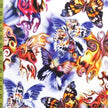

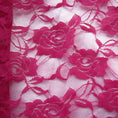






















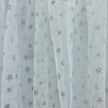






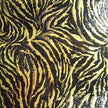

















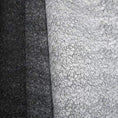





























I definitely agree with the sewing machine remarks. It can be hard at first, but once you know what you’re doing you won’t ruin any fabric. Much easier than hand sewing stretch fabric!